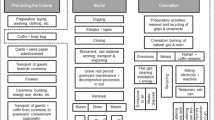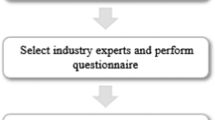Abstract
Distance-to-target weighting methods are widely used in life cycle impact assessment. The methods rank impacts as being more important the further away society’s activities are from achieving the desired targets for the pollutants. However, we feel that the scientific bases of the distance-to-target methods still need more clarification. This article illustrates how multiattribute value theory (MAVT) can be applied to interpret the impact category weights as well as the aggregation rule and normalisation used in the distant-to-target methods. Our comparison revealed that under certain conditions two of the three commonly used impact assessment methods (Ecoindicator 95, ET-method) applying distance-to-target weighting are consistent with the impact assessment framework derived from MAVT. This consistency holds for non-zero targets with equal importance and linear damage functions passing through the origin. We show that the MAVT framework offers a foundation for the methodological development in life cycle impact assessment.
Similar content being viewed by others
References
Ahbe S, Braunschweig A, Müller-Wenk R (1990): Methodik für oekobilanzen auf der basis ökologischcr optimierung (A method for ecobalance and ecological optimisation), Bundesamt für Umwelt, Wald und Landschaft (BUWAL), Bern, Schriftenreihe Urnwelt Nr. 133
Barnthouse L, Fava J, Humphreys K, Hunt R, Laibsn L, Noesen S, Norris G, Owens J, Todd J, Vigon B, Weitz K, Young J, Eds (1997): Life-Cycle Impact Assessment: The State-of-the-Art. Society of Environmental Toxicology and Chemistry (SETAC) and SETAC Foundation for Environmental Education, Pensacoa, Florida, USA
Baumann, H Rydberg T (1994): A comparison of three methods for impact analysis and valuation. Journal of Cleaner Production 2, 13–20
Borcherding K, Eppel T, von Winterfeldt D (1991): Comparison of weighting judgements in multiattribute utility measurement. Management Science 37, 1603–1619
Consoli F, Allen D, Boustead I, Fava J, Franklin W, Jensen AA, de Oude N, Parrish R, Perriman R, Postlethwaite D, Quay B, Séguin J, Vigon B, Eds (1993): Guidelines for life-cycle assessment: A ‘Code of Practice’, Society of Environmental Toxicology and Chemistry (SETAC), Brussels
Dyer JS, Sarin RK (1979): Measurable multiattribute value functions. Operations Research 27, 811–822
Edwards W (1977): How to use multiattribute utility analysis for social decision making. IEEE Transactions on Systems, Man, and Cybernetics 7, 326–340
Finnveden G (1996): Valuation Methods within the Framework of Life Cycle Assessment. Swedish Environmental Research Institute, IVL-Report B 1231, Stockholm
French S (1988): Decision theory: An introduction to the mathematics of rationality. Ellis Horwood Limited, Chichester
Goedkoop M (1995): The Eco-Indicator 95. Amersfoort, The Netherlands
Hird JA (1994): Superfound: The Political Economy of Environmental Risk. John Hopkins University Press, Baltimore
International Organisation for Standardisation (2000): ISO 14042: Environmental management - Life cycle assessment - Life cycle impact assessment
Keeney RL (1992): Value-Focused Thinking: A Path to Creative Decision making. Harvard University Press, Cambridge
Keeney RL, Raiffa H (1976): Decisions with multiple objectives. John Wiley & Sons, New York
Krantz DH, Luce RC, Suppes P, Tversky A (1971): Foundations of measurement. Academic Press, San Diego
Lee KM (1999): A Weighting Method for the Korean Eco-Indicator. Int. J. LCA 4, 161–165
indeijer E (1996): Normalisation and Valuation. Part VI of the SETAC Working Group Report on LCA Impact Assessment. IVAM Environmental Research, University of Amsterdam, The Netherlands
Lindfors LG, Christiansen K, Hoffman L, Virtanen Y, Juntilla V, Hanssen OJ, Ronning A, Ekvall T, Finnveden G. (1995): Nordic guidelines on life-cycle assessment. Nordic Council of Ministers, Nord 1995:20, Copenhagen
McKinsey & Company (1991): Integrated substance chain management. Association of the Dutch Chemical Industry - VNCI, AK Leidschendam, The Netherlands
Miettinen P, Hämäläinen RP (1997): How to benefit from decision analysis in environmental life cycle assessment (LCA). European Journal of Operational Research 102, 279–294
Miettinen P, Hämäläinen RP (1999): Indexes for Fixed and Flexible Environmental Target Setting - A Decision Analytic Perspective. To appear in International Journal of Environment and Pollution 12, 2/3, 147–164
Posch M, de Smet PAM, Hettenlingh JP, Downing RJ, Eds (1999): Calculation and mapping of critical thresholds in Europe. Status report 1999. Coordination Centre for Effects, National Institute of Public Health and the Environment, Bilthoven, The Netherlands
Powell JC, Pearce DW, Craighill AL (1997): Approaches to Valuation in LCA Impact Assessment. Int. J. LCA 2, 1, 11–15
Roy B (1990): Decision-aid and decision making. European Journal of Operational Research 45, 324–331
Saaty TL (1990): How to make a decision: The Analytical Hierarchy Process. European Journal of Operational Research 48, 9–26
Salo AA, Hämäläinen RP (1997): On the Measurement of Preferences in the Analytic Hierarchy Process. Journal of Multi-Criteria Decision Analysis 6, 309–319
Seppälä J (1997): Decision analysis as a tool for life cycle impact assessment. Finnish Environment Institute, The Finnish Environment 123, Helsinki, Finland
Seppälä J (1999): Decision analysis as a tool for life cycle impact assessment. In: Klöpffer W, Hutzinger O (Eds) LCA Documents 4, ecomed publishers, Landsberg
Udo de Haes HA, Jolliet O, Finnveden G, Hauschild M, Krewitt W, Müller-Wenk R, Eds (1999): Best Available Practice Regarding Impact Categories and Category Indicators in Life Cycle Impact Assessment. Int. J. LCA 4 (2) 66–74, (3) 167-174
Weber M, Borcherding K. (1993): Behavioral influences on weight judgments in multiattribute decision making. European Journal of Operational Research 67, 1–12
Wentzel H, Hauschild M, Alting L (1997): Environmental assessment of products, Vol. 1. Chapman & Hall, London
von Winterfeldt D, Edwards W (1986): Decision analysis and behavioral research. Cambridge University Press, New York
Author information
Authors and Affiliations
Corresponding author
Rights and permissions
About this article
Cite this article
Seppälä, J., Hämäläinen, R.P. On the meaning of the distance-to-target weighting method and normalisation in Life Cycle Impact assessment. Int J LCA 6, 211–218 (2001). https://doi.org/10.1007/BF02979376
Received:
Accepted:
Issue Date:
DOI: https://doi.org/10.1007/BF02979376




